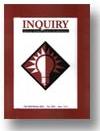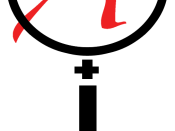Critical thinking and decision-making go hand in hand. This allows us to evaluate a situation, process the information and determines a course of action. The focus of this paper is to define critical thinking and decision-making. Then discuss a decision-making tool or technique that exists in critical thinking.
Critical thinking, as defined in the multimedia Grolier Encyclopedia CD-Rom, is "the general term given to a wide range of cognitive skills and intellectual dispositions an individual needs to evaluate claims and arguments in everyday situations, to discover and overcome personal prejudices and biases, to assess the reliability of information according to established intellectual standards, and to make decisions about what to believe and what to do" (2002). Critical thinking is our ability to question whether to believe or disbelieve what is in front of us and to decide how we are going to respond to it. How we respond is determined by the decisions that we make.
Decision-making is a key component in how we function on a personal and professional level. Decision-making is defined as "the act of deciding between two or more alternative courses of action" (A Dictionary of Finance and Banking in Economics and Business, 1997, p. 84). Being a good decision maker causes others to trust our abilities, whereas the opposite is true if we tend to make decisions quickly without carefully considering the outcome of those decisions and their impacts.
Combining the techniques of critical thinking and decision-making results in situations that have been analyzed closely and potential outcomes clearly considered and defined prior to taking any action. In an article written by Greg Kitzmiller (The importance of critical thinking: it is out of critical thinking that the best strategic plans come, 2003, para. 2), he states "It seems most business people are busy taking action,


